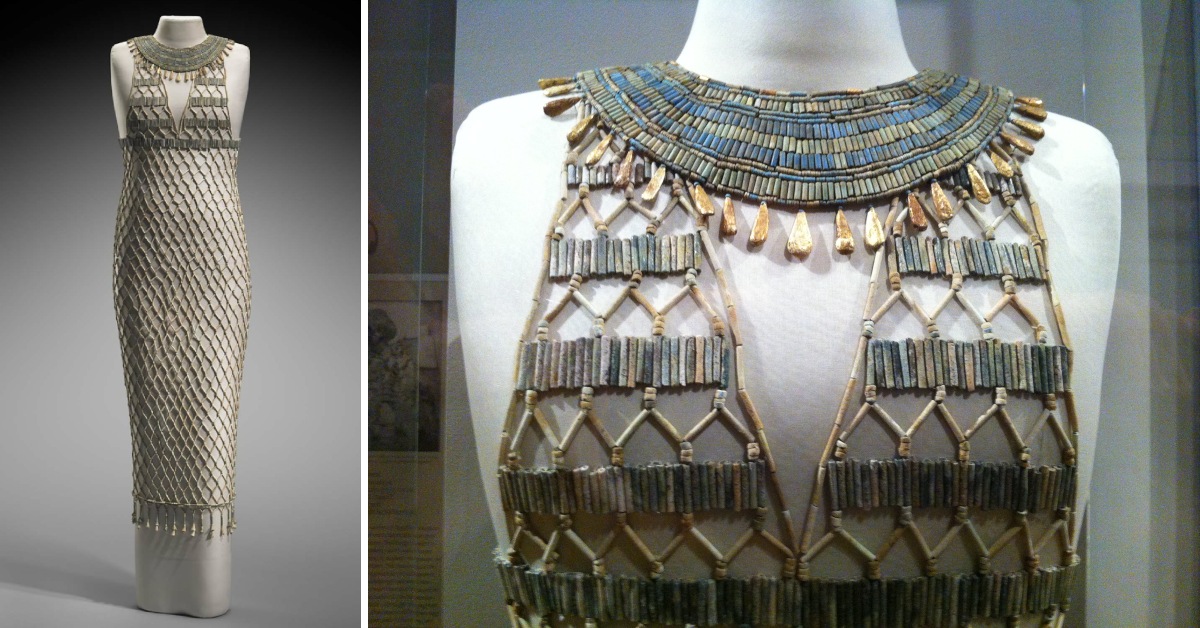The only complete ancient Egyptian beadnet dress found to date reveals a lot about the style and craftsmanship of the Old Kingdom period.

In 1927, a team of archaeologists led by George A. Reisner were excavating at Giza, where they explored the mastaba tomb G7440. Inside the tomb, they found the skeletal remains of an unidentified female, who was wrapped in linen bandages to simulate a living person. Covering her was the front half of a narrow V-necked sheath made of thousands of faience beads. Faience is a glazed ceramic material that was used to imitate precious stones like lapis lazuli and turquoise.
The beads were divided among thirty small, round boxes of varied sizes, and they had different colors, shapes and sizes. Reisner documented everything inside the tomb with photographs, sketches and diaries, but he did not attempt to reconstruct the dress. The boxes with the beads were sent to the Museum of Fine Arts in Boston, where they remained untouched for 60 years.

In 1987, Millicent Jick, a research associate for a prospective MFA exhibit on the burial practices and funerary beliefs of the ancient Egyptians, was assigned the task of solving the mystery of the tiny round boxes and their bead contents. He studied Reisner’s records and counted and sorted the beads in the boxes. He realized that he was dealing with an object of major proportion, but he did not know what form it would assume.
Jick consulted with other experts and compared the beads with other examples of ancient Egyptian beadnet garments, such as shrouds and aprons. He concluded that the beads belonged to a dress that simulated a garment actually worn in life, not a mummy covering. He then proceeded to reassemble the loose beads into a beadnet dress, following Reisner’s sketches and photographs as guides.

The final reconstruction revealed a stunning piece of ancient fashion: a sleeveless sheath dress with a high waistband, straight shoulder straps and a fringed hem of mitra shells. The dress was made of horizontal rows of tubular blue-green beads that alternated with vertical strings of disc-shaped blue beads. The neckline is decorated with a band of blue and green beads forming geometric patterns. The dress is about 114 cm long and 74 cm wide, and it would have been worn over a linen tunic or wrap.
The beadnet dress is an important contribution to the field of Egyptian textile research and restoration, as it shows the skill and creativity of ancient Egyptian artisans and the elegance and sophistication of ancient Egyptian women. The dress is now on display at the Museum of Fine Arts in Boston, where you can admire its beauty and craftsmanship.
Sources: 1, 2, 3
